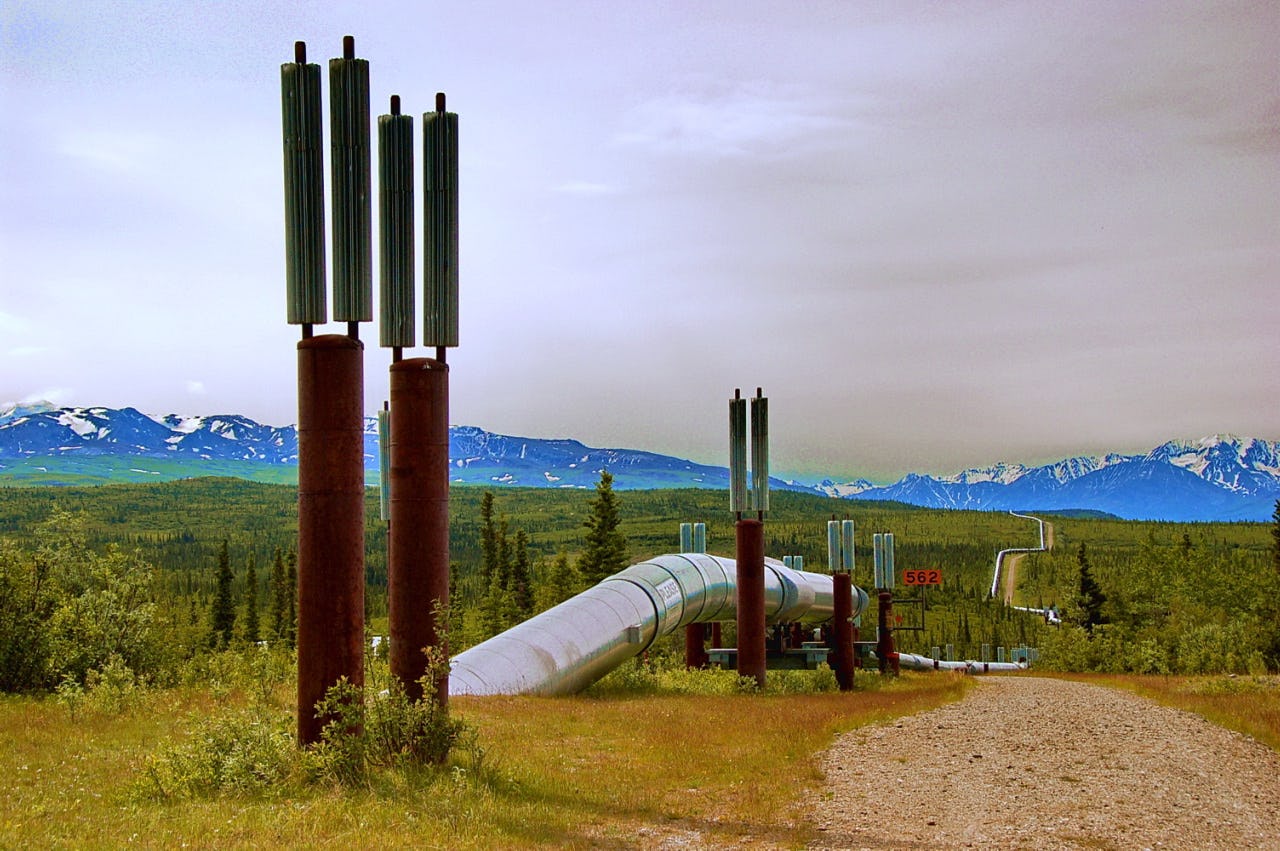Risk Factor: Alaskan-Arctic Energy Resources

Trans-Alaska Pipeline at Delta Junction. Photo: Dave Bezaire
The expectation that the Arctic contains significant oil and gas resources has stimulated increasing interest in resource development to address global energy needs.1) The financial, technical, and environmental risks of operating in the Arctic have created substantial challenges for future U.S. production in the region, resulting in more national conflict and a less comprehensive U.S. energy policy. The question plaguing the clash between global environmental and energy incentives in the Arctic is: how much risk is acceptable to produce energy in the High North?
The current pipeline debate in the U.S. is inherently linked to development of natural resources in the High North. The first significant Arctic discovery was made in Alaska’s Prudhoe Bay Field in 1968.2) Since 1977 Prudhoe Bay has continually supplied oil to the United States, transported via the Trans-Alaska Pipeline System (TAPS).3) Currently, the TAPS oil pipeline is nearing the lower limit on throughput and pace of offshore development may be too slow to keep the flow of oil up.4) Excess capacity in the Alaska pipeline could support additional development, but if flow rate continues to decline the pipeline will encounter a growing number of technical and economic problems that threaten its continued viability, thus raising the potential for closure.5)
The importance of the Arctic National Wildlife Refuge (ANWR) for both sides of the Alaskan-Arctic debate is that ANWR has high oil resource potential in a relatively small area that is easily connected to a pipeline. ANWR boasts pristine wilderness, one of the last undeveloped regions in the United States, with a large migratory caribou area. Offshore, fears of disrupting ocean life have stalled air and sound permits in the Beaufort and Chuckchi seas, as have the questions of ocean currents and the movement of oil from a potential spill along the coastline of the Chukchi Sea. Weather in the High North is inhospitable for most pipelines, even those running along the sea floor, posing the issue of risk associated with pipeline construction, and thus shaping pipeline debates to follow.6)
Conflicts between state and federal government additionally complicate ANWR drilling—the majority of resources discovered in ANWR are on federal land. As a major owner of this land, the federal government has an interest in revenues linked to production. This interest is further tied to national energy needs and the global market. State interests are inexorably connected to production of oil and gas resources in Alaska, with over 85% of state budget attributed to petroleum revenues.7) The state therefore is willing to take higher risks, as Alaska’s livelihood depends on these revenues. The risks the federal government takes are of a different sort—alienating potential campaign contributors and voters.
Conversely potential risks do not only affect the United States. As Arctic development increases, and the U.S. establishes its own procedures for accessing resources, Arctic member states will look to U.S. success, or failure, for precedents. The U.S.’ pledge to promote sustainable development will have no leverage should the United States irreversibly damage the Alaskan environment. Higher standards of development mean lower impact and having a voice in the principles of Arctic development. Engagement and leadership in the international context are crucial; U.S. environmental control is enforced at a higher standard than in most countries of the world. Yet global environmental control is not possible without multiple parties.
U.S. Arctic development policy is at a crossroads: do we take unpopular risks for vital resources? The Arctic presents two different risk factors: 1.) Long-term risk, i.e. environmental, is often quantifiable and visible; 2.) Near term risk includes price and quantity fluctuations, supply change disruption, and high levels of dollar outflows, potentially worsening trade balances. The world has already decided which risk is worse: in the face of low probability but high risk energy decisions, it is easy to forget each barrel of oil is produced with risk already in place—whether it is from the deserts of Saudi Arabia or the oceans of Australia. The probability of disaster is historically low. The U.S. has exhausted low risk energy options—distinguishing among oil and other energy sources. The perceived need in the U.S. to maintain our current level and system of energy consumption continues undisrupted.
The U.S. must make a responsible decision regarding Arctic resource development: design and implement a “comprehensive, long-term scientific research and monitoring plan,” and improve stakeholder participation in High North outer continental shelf (OCS) decision-making.8) To make a significant contribution to global energy supplies, U.S administrations must reduce the uncertainty faced by companies undertaking exploration and development by establishing clear rules regarding investment and operating requirements. Broad range reforms and specific industry and environment-conscious policies are necessary. The risks built into the very nature of both the global energy industry and American politics will not go away; the development of Alaskan resources may be inevitable.
References